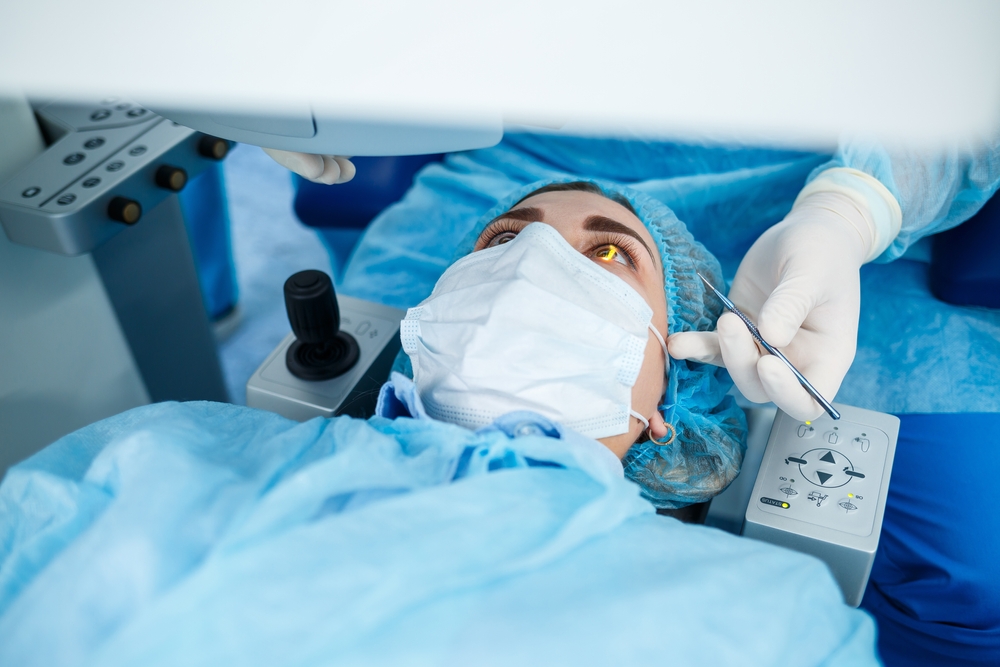
LASIK is a popular refractive procedure where a laser is used to reshape the cornea, which is the eye’s front surface, to improve vision. It is used to treat nearsightedness, farsightedness, and astigmatism and can allow you to experience greater visual freedom.
If you want to reduce your dependence on visual aids through LASIK, you may wonder if this procedure is safe. Keep reading to learn more about LASIK, including whether or not it is safe!
What Makes LASIK Safe?
When performed by an experienced refractive surgeon, like those at VisionFirst Eye Center, LASIK is considered an extremely safe procedure. Advances in technology and technique have improved the safety of LASIK surgery over the past several years.
Here are some of the factors that contribute to the safety of LASIK:
Laser Technology
The use of a laser instead of a blade for flap creation results in more precise, customizable flaps with less trauma to the cornea.
Wavefront-Guided Systems
Advanced excimer lasers and wavefront-guided systems provide a high degree of accuracy.
Candidacy Screening
Improved diagnostic technology allows surgeons to thoroughly screen candidates and rule out those inappropriate for LASIK
LASIK Sensors and Eye Trackers
Use of sensors and eye trackers during the procedure to ensure proper laser placement and treatment zones.
Strict Sterilization Protocols
Strict sterilization protocols significantly reduce the risk of infection.
All of these reasons make LASIK a very safe and effective procedure. At VisionFirst Eye Center, our LASIK surgeons place high importance on ensuring that LASIK is safe, which begins with ensuring that each person who has LASIK is a good candidate for the procedure.
What Happens During LASIK?
The LASIK procedure takes about five to ten minutes per eye. First, your eye doctor will apply numbing eye drops to make sure you are comfortable during the procedure.
The first step is creating the corneal flap using either a laser. The flap is gently lifted, allowing your LASIK surgeon access the inner corneal layers.
Another laser then precisely reshapes the corneal tissue, correcting nearsightedness, farsightedness, and astigmatism as needed. After the laser treatment, the flap is laid back into position, where it reseals during your recovery.
Many people notice an improvement in their vision right after the procedure. However, for some, it may take a few weeks to witness the full potential of your vision.
You may experience some blurry vision and irritation as the eyes heal fully over the first few days after LASIK.
How Do I Know if I am a Good Candidate for LASIK?
The best LASIK candidates are healthy adults over eighteen years old with stable vision who have realistic expectations of the procedure. The best way to determine if you might be a good candidate for LASIK is to see your eye doctor at VisionFirst Eye Center for a LASIK consultation.
During this exam, your eye doctor will determine whether or not LASIK might be right for you. Measurements are taken of corneal thickness, refractive error, eye anatomy, tear production, and pupil size.
Your eye doctor will discuss whether you are in the normal range expected for successful LASIK outcomes. Those with very high prescriptions, very flat or steep corneas, dry eye problems, or thin corneas may not be suitable candidates.
LASIK cannot correct color blindness or cataracts. For optimal results, you should go into your LASIK consultation with an open and honest dialog with your refractive surgeon regarding your eye health history and vision goals.
Do you want to learn if you might be a good candidate for LASIK? Schedule a LASIK consultation at VisionFirst Eye Center in Birmingham, AL, today!








